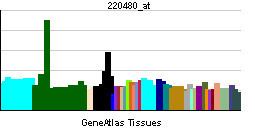Entrez 9464 | Ensembl ENSG00000164107 | |
 | ||
Aliases HAND2, DHed, Thing2, bHLHa26, dHand, heart and neural crest derivatives expressed 2 External IDs MGI: 103580 HomoloGene: 32092 GeneCards: HAND2 | ||
Heart- and neural crest derivatives-expressed protein 2 is a protein that in humans is encoded by the HAND2 gene.
Contents
Function
The protein encoded by this gene belongs to the basic helix-loop-helix family of transcription factors. This gene product is one of two closely related family members, the HAND proteins, which are asymmetrically expressed in the developing ventricular chambers and play an essential role in cardiac morphogenesis. Working in a complementary fashion, they function in the formation of the right ventricle and aortic arch arteries, implicating them as mediators of congenital heart disease. In addition, this transcription factor plays an important role in limb and branchial arch development.
A progesterone-regulated transcription factor regulates stromal-epithelial communication in early pregnancy.
HAND2 is involved in the development of the tongue.
Interactions
HAND2 has been shown to interact with GATA4, PPP2R5D, PHOX2A., TWIST1, and TWIST2.
Clinical Significance
Hand2 interactions with TWIST1 and TWIST2 genes are critical for proper limb development. Recent literature shows over dosage of Hand2 can result in many defects in the limbs, face, heart, and lower lumbar vertebrae. In this instance, trisomy of the hand2 gene can directly cause human congenital heart disease.
Hand2 gene hypermethylation and epigenetic silencing has also been implicated to increase the development of endometrial cancer. Mounting evidence showing its methylation increased chances of premalignant endometrial lesions. Hand2, in addition to its other functions in the developing heart and limbs, has been found to be an important transcription factor seen in the endometrial stroma. In fact, in mice with the Hand2 gene knocked out, they developed premaligant lesions as they grew older, further providing evidence of its role in endometrial cancer development. These findings have led to Hand2 becoming a potentially promising biomarker for early detection of endometrial cancer and may be used to predict its treatment.
